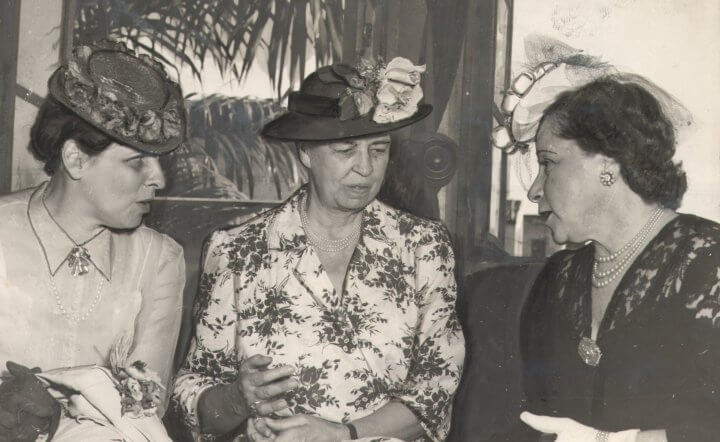
Eleanor Roosevelt’s influence grew, even after the passing of her husband. She made a name for herself as a champion of the less fortunate and has her place in history as a civil and women’s rights leader.
1. Eleanor Roosevelt was a First Lady who had many firsts. She was the first woman to speak in front of a national convention, to write a syndicated column, to earn money as a lecturer, to be a radio commentator and to hold regular press conferences.
2. Eleanor had a deep commitment to social reform. Her goal was to give a voice to people who did not have access to power. Among her many platforms for social reform were the abolition of child labor, the establishment of a minimum wage and the passage of legislation to protect workers.
3. When Franklin was paralyzed by polio in 1921, Eleanor became her husband’s “eyes and ears.” She spent her time traveling the country and gathering the information that the president needed in order to govern his people.
4. Eleanor and her husband F.D.R. made a great political team (unlike the traditional president and first lady dynamic). Eleanor would interrupt her husband at any time to confront him about certain issues. Her persistence and involvement lead to F.D.R.’s signing of a series of Executive Orders barring discrimination in the administration of various New Deal projects.
5. In her travels around the country, Eleanor Roosevelt developed a sophisticated understanding of relations between races and was shocked at how systematically blacks were discriminated against.
6. Eleanor practiced what she preached when it came to being an advocate against discrimination. This was made quite clear when in 1938, while attending the Southern Conference for Human Welfare in Birmingham, Alabama she refused to abide by a segregation ordinance that required her to sit in the white section of the auditorium, apart from her black friends. This was not the first time that she made her feelings known. She also publicly resigned from the Daughters of the American Revolution after it barred the black singer Marian Anderson from its auditorium.
7. Eleanor challenged institutions that failed to provide equal opportunities for women long before historically recorded women’s rights advocacy caught on. Eleanor was clever in how she pushed this issue. As First Lady, she held more than 300 press conferences that she cleverly restricted to women journalists, knowing that news organizations all over the country would be forced to hire their first female reporter in order to have access to the First Lady. Eleanor insisted that she was not a feminist, though she was often labeled as such. She simply explained her stance by saying that “women should be judged, when it comes to appointing them or electing them, purely because they are women.”
8. Eleanor Roosevelt gave many speeches and wrote columns where she campaigned to recruit women workers to the factories during the war. She encouraged women to “learn a skill and be useful,” and she cautioned young women against jumping into early marriage and not taking the opportunity to “expand her horizons.”
9. Eleanor was instrumental in securing the first government funds allotted for the building of child-care centers so that women would have the ability to continue working even after the completion of the war. She also taught women how to fight for the post-war jobs.
10. Eleanor Roosevelt’s story was like the story of most other women at the time in that she struggled to find an identity of her own apart from her husband and her family. She struggled with depression and insecurity. However, her ability to turn her vulnerabilities into strengths made her an example to women all over the world. Her attitude and determination made her into one of history’s most effective advocates for social justice.

Leave a Reply